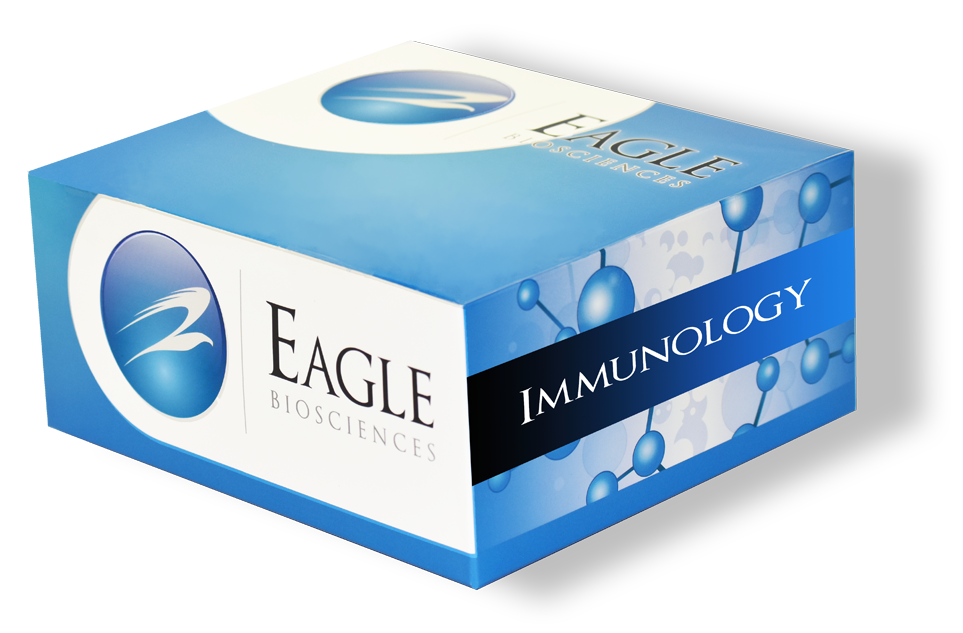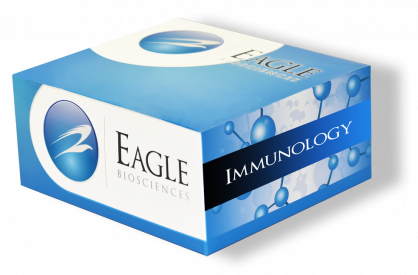Human sICAM-1 ELISA Assay
The Human sICAM-1 ELISA Assay is For Research Use Only
Size: 1×96 wells
Sensitivity: 31 pg/mL
Dynamic Range: 62.5 – 2000 pg/ml
Incubation Time: 3.5 hours
Sample Type: Serum, Plasma, Cell Culture
Sample Size: 100 µl
Alternative Names: Soluble Intercellular Adhesion Molecule 1, CD54, Cluster of differentiation 54
Assay Background
Intercellular Adhesion Molecule 1 (ICAM-1), also known as CD54, is a nearly ubiquitous transmembrane glycoprotein that plays a key role in leukocyte migration and activation. Human ICAM-1 contains five Ig-like domains in its extracellular domain (ECD) and associates into non-covalently linked dimers. Soluble forms of monomeric and dimeric ICAM-1 (sICAM-1) can be generated via proteolytic cleavage by cathepsin G, elastase, MMP-9, MMP-14/MT1-MMP, and TACE/ADAM17. In the mouse, alternate splicing generates isoforms that lack particular Ig-like domains and are differentially sensitive to proteolysis. Within the ECD, human ICAM-1 shares 53% amino acid sequence identity with mouse and rat ICAM-1.
The principal binding partners of ICAM-1 are the leukocyte integrins LFA-1 (CD11a/CD18) and Mac-1 (CD11b/CD18) (9 – 11). The multivalency of dimeric ICAM-1 increases its strength of interaction with LFA-1. ICAM-1 also binds several non-integrin ligands including CD43/sialophorin, fibrinogen, hyaluronan, rhinoviruses, and Plasmodium falciparum-infected erythrocytes. At sites of inflammation, ICAM-1 is upregulated on endothelial and epithelial cells where it mediates the adhesion and paracellular migration of leukocytes expressing activated LFA-1 and Mac-1. ICAM-1 ligation prolongs antigen presentation by dendritic cells and promotes T cell proliferation and cytokine release. ICAM-1 activation also participates in angiogenesis, wound healing, and bone metabolism.
Soluble ICAM-1 has been reported in serum, cerebrospinal fluid, urine, and bronchoalveolar lavage fluid. Elevated levels of sICAM-1 in these fluids are associated with cardiovascular disease, type 2 diabetes, organ transplant dysfunction, oxidant stress, abdominal fat mass, hypertension, liver disease, and certain malignancies. sICAM-1 promotes angiogenesis and serves as an indicator of vascular endothelial cell activation or damage (41, 42). It also functions as an inhibitor of transmembrane ICAM-1 mediated activities such as monocyte adhesion to activated endothelial cells and sensitivity of tumor cells to NK cell-mediated lysis.
Related Products
Human CD102 sICAM-2 ELISA Assay
Human sICAM-3 ELISA Assay
Human CD54 ELISA Assay


